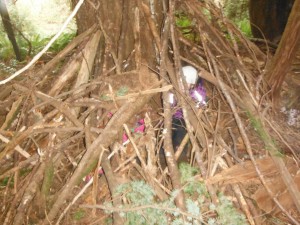Have you ever wondered where we get our energy from? We wondered about this at the start of the week so we checked out some books that taught us that you can trace our energy source back to the sun! This week we learned all about food chains, focused more the concept of predator and prey as well as which animals are herbivores, omnivores and carnivores. We learned that although some animals are bigger than others, it doesn’t mean they are higher in the food chain! Our book told us that plants are at the bottom of the food chain, and we that many of us are omnivores because we eat both animals and plants.
At snack one day we traced all of our food back to the sun. “I have an apple” a child announced. “Where did you get that apple?”Ms. Lockerbie asked. “The store” the child replied. “And where did the store get it?” Ms. Lockerbie asked. “An apple tree” the child responded. “Where did they get their energy from?” asked Ms. Lockerbie. “The sun!” the child thought. We played this game for many of the children’s snacks from rice cakes, nuts, eggs, grapes and blueberries, each time tracing the food back to the sun. We then thought of tracing other animal’s food. A cougar gets his energy from eating a rabbit, the rabbit gets his energy from eating plants and the plants get energy from the sun.
The predator/ prey play was taken to a new level at the site! Children were setting traps in case any predators tried to get into their shelters. They made covered traps that their predator would fall in. They made a stick/branch trap that would hit and scare off a predator, as well as an alarm system and slide to escape. Many children experimented with being the predator or the prey by either being the one chasing or being chased. One child would creep behind a tree then four children would scream and run across the site, being different animals from a bunny, a puppy, a squirrel to a puppy.
This play is full of chance taking and exploring the experiences of something other than themselves. I see children who have less confidence being able to take on the role of a powerful predator. I see children thinking ahead, planning and being protective and helpful to each other. I see their fears, curiosities and questions about predators being explored in their play. I see girls taking on roles of the predator and boys the prey. There is an explosion of confidence and power when they take on the predator role, and experimentation with risk when being the prey.








Hello,
I am a Master student researching how parental perceptions influence unstructured outdoor play. I was wondering if it would be possible to visit the preschool or kindergarten for a day to see how things work?
Thanks!
Morgan